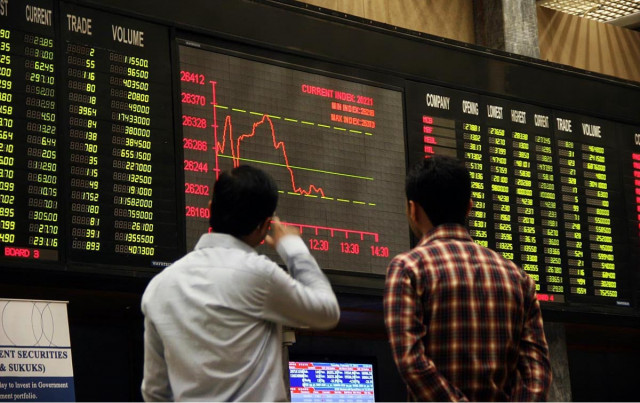Business
Millions more Americans could access obesity drugs after Trump’s deals with Eli Lilly, Novo Nordisk

US President Donald Trump makes an announcement in the Oval Office of the White House in Washington, DC on Nov. 6, 2025.
Andrew Caballero-Reynolds | AFP | Getty Images
President Donald Trump on Thursday struck landmark deals with Eli Lilly and Novo Nordisk that could mark a turning point in how many people can access their costly blockbuster obesity drugs.
Under the agreements, Medicare will start covering GLP-1s for obesity for certain patients for the first time beginning in mid-2026 – a shift that will open access to millions of older adults and could spur more employers and other private insurers to follow suit, some experts said. Novo Nordisk and Eli Lilly are also lowering the prices that all state Medicaid programs will pay for GLP-1s, but it’s up to states to opt into coverage.
Obesity drug coverage among state Medicaid plans, employers and other private insurers remains spotty due to the $1,000 or more monthly list prices of existing GLP-1s, including Eli Lilly’s obesity injection Zepbound and Novo Nordisk’s competitor Wegovy.
The limited insurance coverage has blocked out patients who can’t afford their hefty price tags. That lack of access has led to mounting pressure on health plans and the government to expand coverage — and the government agreements with drugmakers could mark a major shift.
“I think it’ll start with the government, start with Medicare, and the insurers will quickly follow,” Nick Fabrizio, an associate teaching professor in Cornell’s health policy program, told CNBC. “I do think that’s coming.”
“This is a great step towards trying to address a chronic and serious issue, and for those patients who may feel like they have no hope,” he said.
Roughly 8 to 9 million people in the U.S. are using GLP-1s, Eli Lilly CEO David Ricks said at a briefing with reporters on Thursday. The added Medicare coverage under the deal could bring in as many as 40 million new eligible patients, and prompt more commercial plans to cover the medicines, he said.
The deals could also address the inability of many patients with limited or no insurance coverage for obesity drugs to access them, by offering the treatments at a discount on the Trump administration’s direct-to-consumer website, TrumpRx.gov.
The monthly out-of-pocket cost of existing injections and upcoming pills could range from $50 to $350 starting next year, depending on the dosage and insurance coverage a patient has.
Still, there is a law prohibiting Medicare from covering weight loss drugs, so any changes would have to come from Congress. Eli Lilly’s Ricks told reporters Thursday that for now, the government will launch an initial pilot program in the spring of 2026 under a temporary legal mechanism. It would be voluntary for Medicare prescription drug plans, so “it may be possible that a few plans do not participate, but I would expect almost all do,” he said.
But Ricks said that it will transition into a formal so-called Center for Medicare and Medicaid Innovation pilot program in 2027, which means it will be mandatory for all Medicare Part D plans.
“So we expect broad coverage in all plans both in 2026 and beyond,” he said.
Medicare coverage could be a sea change
Likely the most notable feature of the deals is Medicare coverage of obesity drugs, as it will allow the treatments to reach new patients in the program and could lead to broader private insurance coverage.
Under the deals, Eli Lilly and Novo Nordisk agreed to cut the price Medicare and Medicaid pay for GLP-1s to $245 per month. In Medicare specifically, certain patients will pay a copay of $50 per month for all approved uses of injectable and oral GLP-1 drugs, including diabetes and obesity treatment.
But the Trump administration is putting some constraints on which Medicare beneficiaries will be eligible to receive GLP-1s for obesity and cardiovascular and metabolic benefits. People who qualify include patients with a body mass index of 27 or above with prediabetes or established cardiovascular disease; people with a BMI of 30 or more with related health conditions; or those with severe obesity, or a BMI of 35 and above.
GLP-1s for weight loss are approved for a broader population: people who have obesity or are overweight with one related condition. In a note Thursday, Leerink Partners analyst David Risinger also said it’s unclear whether the government will allow patients to stay on a GLP-1 for obesity after their BMI levels drop.
Even with those restrictions, “I think in practice, it’s still going to cover a fair number of people,” said Darius Lakdawalla, chief scientific officer at the University of Southern California’s Schaeffer Center.
JPMorgan analyst Chris Schott said the eligibility criteria mean 80% of the obese population in Medicare could receive coverage for GLP-1s, despite the limits.
“Today’s deal will open up meaningful access to obesity drugs,” Schott said in a note about Eli Lilly on Thursday.
Lakdawalla added that while there isn’t clear evidence that private insurers will expand coverage on the heels of government plans, “it’s just optically harder for them to continue to constrain coverage when Medicare and Medicaid are covering them.”
“That’s going to exert some pressure for commercial coverage of these drugs to expand as well,” Lakdawalla said.
Coverage for GLP-1s for obesity has ticked up slightly, but remains sparse: A May survey of more than 300 companies by the International Foundation of Employee Benefit Plans found that 36% provided coverage for GLP-1s for both weight loss and diabetes, up from 34% in 2024.
Medicaid, direct-to-consumer offerings could fill gaps
Lakdawalla said the direct-to-consumer offerings under the deal could be useful for people who are underinsured, uninsured or may not have coverage for obesity medicines. Still, it’s unclear how many more patients the drugs will reach due to the offerings.
Both Eli Lilly and Novo Nordisk have introduced lower cost options for their drugs for people paying in cash and purchasing the drugs directly through their websites. But the deals with Trump will give those patients even bigger discounts.
On TrumpRx, the average monthly cost for Wegovy, Zepbound and other injectable GLP-1s will start at $350 and drop to $250 within the next two years, according to senior Trump administration officials. Eli Lilly and Novo Nordisk both offered some GLP-1s on their direct-to-consumer platforms for up to $450 to $500 per month.
Starting doses of obesity pills from Eli Lilly and Novo Nordisk — expected to hit the market next year — will be $149 per month on TrumpRx, Medicare and Medicaid.
Eli Lilly on Thursday said it would lower prices by $50 on its own direct-to-consumer platform, LillyDirect, which already offers Zepbound and other drugs at a discount to cash-paying patients. The multidose pen of Zepbound will be available for $299 per month at the lowest dose, with additional doses being priced up to $449 per month.
In terms of Medicaid, Cornell’s Fabrizio said states will likely want to start covering obesity drugs at the lower price point, “but the question is how will they pay for it?”
Around a dozen state Medicaid programs cover obesity drugs, according to 2024 estimates from KFF, a health policy research organization. While GLP-1s offer substantial health benefits to Medicaid beneficiaries, state programs are already facing constrained budgets and administrative demands.
Fabrizio added that raising taxes to cover the drugs “could be a sticky issue.”
Still, JPMorgan’s Schott said offering lower prices to Medicaid programs could lead to a “significant increase in coverage” in that channel, where Zepbound has very limited uptake.
Business
Planning Your Taxes For 2026? What Freelancers And Gig Workers Should Know

Income doesn’t come regularly
Freelancers earn from different clients at different times, making it hard to know the final income figure early

Multiple clients mean scattered TDS
Tax is deducted by many payers under different sections, and details don’t always update together in AIS or Form 26AS.

Income details settle very late
Many payments and TDS entries appear only near the year-end, delaying tax calculations.

First-time taxpayers lack clarity
Young gig workers often don’t know ITR deadlines, advance tax rules, or penalties for late filing.

Paperwork isn’t ready on time
Forms like 16A, invoices, bank statements, and expense bills are often unorganised or missing.

TDS deducted ≠ filing done
A common myth is that if tax is already deducted, filing the return is optional. It’s not.

Refund expected, filing delayed
Many assume that if no tax is payable or refund is due, filing late won’t matter — but penalties still apply.

E-verification gets ignored
Returns filed but not verified within 30 days are treated as invalid, almost like not filing at all.

Portal issues at the last moment
Heavy traffic, OTP failures, and technical errors near deadlines push filings beyond the due date.

No regular income tracking system
Not maintaining client-wise records of invoices, payments, and TDS creates confusion at filing time.

Deductions are gathered too late
Proofs for insurance, mutual funds, PPF, health cover, or tuition fees are often collected at the last minute.
Business
SFIO probes IndusInd’s Rs 1,960 crore derivatives hole – The Times of India

MUMBAI: Serious Fraud Investigation Office (SFIO) has opened a formal probe into IndusInd Bank after a Dec 23, 2025 letter triggered an investigation under the Companies Act, 2013, over accounting lapses tied to internal derivative trades.In a filing, the bank said SFIO, under the MCA, seeks information after the lender flagged on June 2 issues spanning internal derivatives, unsubstantiated “other assets/liabilities”, and microfinance interest/fee income. It disclosed the update on Dec 18, pledged full cooperation, and posted details on its website.Derivatives irregularities have hit P&L by about Rs 1,960 crore as of March 31, 2025, eroding reported net worth by roughly 2.3% as of Dec 2024. Earlier profits were overstated as notional gains flowed into P&L while losses sat parked as assets, inflating NII and earnings quality. The derivatives irregularities saw several members of the senior management stepping down with the board bringing in Rajiv Anand from Axis Bank to head the private lender.The bank recognised the losses, absorbed pain in its FY25 earnings which tipped the bank into a Q4 FY25 net loss after one-off write-offs/provisions. Capital/net worth took a 2–2.5% post-tax hit, trimming buffers and nudging growth appetite and capital pricing.The derivatives loss resulted in the shares of the bank sliding as investors reassessed earnings credibility and governance. The scrutiny also sharpened on the board/management/audit committees, intensifying regulatory pressure and SFIO oversight.
Business
Navi Mumbai airport opens today with 30 domestic flights – The Times of India

MUMBAI: Navi Mumbai International Airport (NMIA) opens to commercial operations on Thursday after years of missed deadlines, opening a second gateway for air travel in the Mumbai region. The day will see four airlines operating about 30 domestic flights at India’s newest greenfield airport. The first scheduled arrival will be an IndiGo flight from Bengaluru, touching down at 8 am, while the first departure will also be operated by IndiGo, a morning service from Navi Mumbai to Hyderabad, scheduled to take off at 8.40 am. The terminal building will open to departure passengers around 6.40 am, said an NMIA spokesperson.“On Day One, domestic services will be operated by IndiGo, Air India Express, Akasa Air and Star Air connecting NMIA to nine destinations across India. The airport will handle 15 scheduled departures on the first day,” said an NMIA spokesperson.“During the initial phase, NMIA will operate between 8 am and 8 pm, with up to 24 scheduled daily departures to 13 destinations and the capability to manage up to 10 aircraft movements per hour. From Feb 2026, operations are planned to progressively scale up to round-the-clock services,” the spokesperson added. “Passenger services from day one will be supported by Digi Yatra-enabled contactless processing at designated touchpoints, along with trained terminal staff across kerbside, check-in, security and boarding areas,” the spokesperson said. Conventional check-in counters too will be available for passengers not opting for Digiyatra. Retail and food and beverage offerings have been curated with a focus on affordability and local preferences, the airport said.In its initial phase, NMIA opens with terminal 1 and one operational runway; the terminal building has a capacity to handle 20 million passengers annually, but it is expected to touch that number before mid-2026. The terminal building can accommodate about 2-3 million passengers beyond its declared capacity. The new airport is 45-50 km from North Mumbai, 35-40 km from South Mumbai and 35-45 km from the eastern suburbs.
-

 Fashion7 days ago
Fashion7 days agoIndonesia’s thrift surge fuels waste and textile industry woes
-

 Business7 days ago
Business7 days agoBP names new boss as current CEO leaves after less than two years
-

 Tech1 week ago
Tech1 week agoT-Mobile Business Internet and Phone Deals
-

 Sports7 days ago
Sports7 days agoPKF summons meeting after Pakistani player represents India in kabaddi tournament
-

 Entertainment7 days ago
Entertainment7 days agoIndia streamlines visa rules in boost for Chinese professionals
-

 Sports7 days ago
Sports7 days agoUWCL grades for all 18 teams: Leuven get A+; Barça an A-, PSG fail
-
Sports5 days ago
Alabama turned Oklahoma’s College Football Playoff dream into a nightmare
-

 Entertainment7 days ago
Entertainment7 days agoRadiation fears rise after cracks found in $2 billion Chernobyl shield












